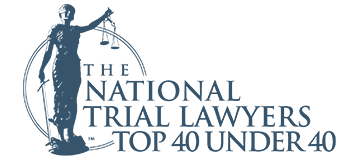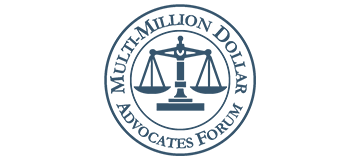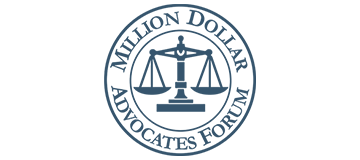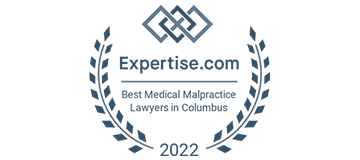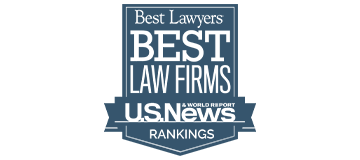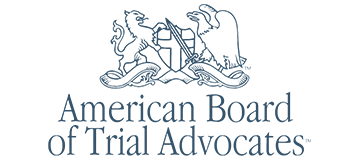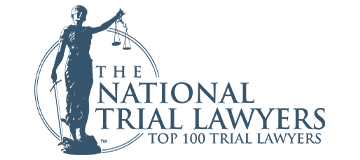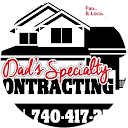Few things in life are more joyous than the arrival of a healthy newborn baby. But that feeling of joy quickly dissipates when parents learn the awaited day of birth will never arrive.
In this case, our clients experienced that grief firsthand. Their despair was only compounded when they learned there was evidence—strong evidence—that the loss of their unborn child was likely caused by external conditions that could have been avoided.
How were they to react upon learning the loss of their child may not have been caused by a natural miscarriage? That the child could be alive if not for someone else’s negligence?
As Ohio wrongful death attorneys, we look at the facts of a case objectively and root out what happened and why. We then do what it takes to help our clients follow a path of legal action that can ease their suffering and repair their loss—and do it without amplifying their suffering.
A hidden threat to one family’s security
Mark* and Stephanie* were excited about moving into their brand-new home with their one-and-a-half-year-old son. Mark was a police officer and Stephanie was a nurse. Their future was bright.
When construction was completed, the family moved in to their new home. Shortly after that, Stephanie discovered she was pregnant with their second child. They were elated about their growing family, and particularly delighted when they learned the baby would be a boy. Ten weeks into the pregnancy, visits to the doctor confirmed the pregnancy was progressing normally. The baby Stephanie was carrying was healthy and growing.
This was in the fall of 2015. As the days turned colder, Mark and Stephanie noticed something odd was happening in their new house. A fine soot was accumulating on the walls and on the tops of cabinets. They would clean it only to have it reappear in a few days. With the windows of the house closed, they didn’t know how the dirt was getting in.
For a free legal consultation, call (614) 481-6000
A nuisance turns fatal
Around that same time, their toddler became chronically cranky and stopped sleeping through the night. At first, they suspected a normal childhood malady such as an ear infection. Their doctor ruled out that diagnosis, but he wasn’t sure what was wrong. He prescribed antibiotics, but medication brought no improvement.
Stephanie was getting frequent headaches and experiencing bouts of nausea. She couldn’t understand the reason for her sudden discomfort. After all, she was nearly through the first trimester of her pregnancy. Why the nausea now?
A checkup at 11 weeks confirmed that everything was fine with the pregnancy. But at the 13-week checkup, Stephanie’s doctor couldn’t find a heartbeat for the baby.
A few days later, Stephanie underwent a painful surgery to remove the remains of the baby she and her family had already come to love.
The cause of a wrongful death
Mark contacted the construction company about the continuing soot buildup. An inspection of the premises revealed the problem: An air shutter valve in the gas fireplace had been installed improperly. The result was that the fireplace (which the family had been running in the colder months) produced an excess carbon residue that accounted for the “soot” accumulating in the house.
But the faulty valve had a much more serious consequence. It was leaking carbon monoxide into the house—at levels low enough to avoid setting off the carbon monoxide detectors or to be immediately fatal, but high enough to gradually poison the family.
And enough to lead to the death of their unborn son.
Click to contact our personal injury lawyers today
Seeking justice outside the courtroom
The improper installation of the air shutter valve was clearly a failure on the part of the construction company. and through Stephanie’s medical records, and research about the effects of carbon monoxide on infants in utero, we were convinced the miscarriage had been a direct result of the construction company’s negligence.
But Mark and Stephanie were reluctant to pursue a lawsuit. Stephanie had suffered enough trauma from the miscarriage and the surgery that followed it, and didn’t want to relive it in a legal proceeding. They agreed it wasn’t right for the contractors to get away with such negligence, but they didn’t want to bring public attention to their personal family tragedy through litigation, either. We understood.
The construction company’s insurance adjuster initially treated the incident as if it were a nuisance to be brushed aside. He offered a settlement amount that didn’t begin to address the family’s suffering. So we waited to respond and continued to gather convincing medical evidence as if we were going to court.
Finally, we were contacted by the insurance adjuster. We told him, in effect, that if he was anxious to close out this case (which he was), he would have to make a serious offer. We presented our evidence, and after several volleys of offers and counteroffers, the adjuster finally came back with a proposal that we felt was appropriate. The final offer was than seven times his initial offer.
Our clients accepted the offer—all without having to go through depositions and a public hearing.
Mark and Stephanie could use the settlement to repair and clean their home or seek out a new home. They could put the tragedy behind them and focus on their family’s future.
Complete a Free Case Evaluation form now
No two clients are alike
Whether a tragedy involves personal injury or a wrongful death, each family’s needs are different. Some need a trial and jury verdict to vindicate their suffering. Others, like Mark and Stephanie, simply want compensation that is just and discreet.
Legal counsel should be attuned to people’s individual needs. We believe that, to effectively represent our clients, we need to know not only the law and the facts of the case, but also where, for each client, healing begins.
Give us a call—we’re here to help.
The outcome of any client’s case will depend on the particular legal and factual circumstances of the case.
*Names in this article have been changed to protect our clients’ privacy.
Call or text (614) 481-6000 or complete a Free Case Evaluation form




